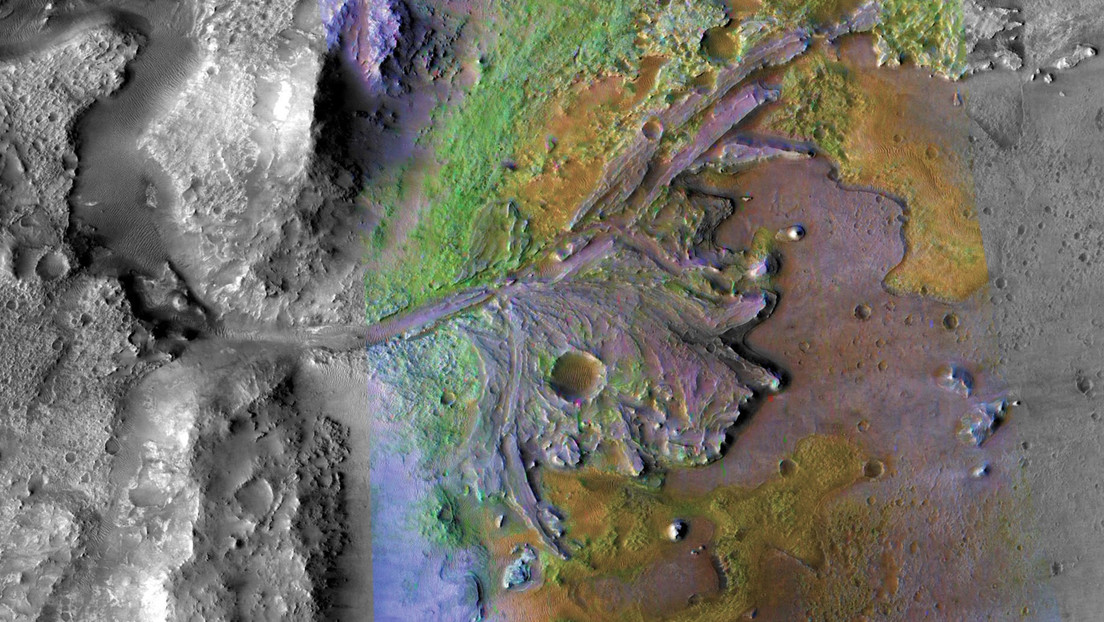
An international group of researchers identified the presence of ancient lake sediments deposited by water at the base of the Jezero crater floor, located on the western edge of the Isidis Planitia plain, north of the equator of Mars, the University of California reported this Friday. in Los Angeles, United States.
The findings corroborate previous orbital images and other data that lead scientists to theorize that parts of Mars were once covered in water and may have supported microbial life.
In a new study recently published in the journal Science Advances, scientists reported the discovery of sediments in the western delta deposits of Jezero Crater after analyzing measurements obtained from the RIMFAX ground-penetrating radar aboard Perseverance.
From orbit we can see a lot of different deposits, but we can't say for sure if what we are seeing is their original state or if we are seeing the conclusion of a long geological history, said scientist David Paige, who stressed that, to know About the origin of these deposits, it had to be observed below the Martian surface.
Between May and December 2022, Perseverance traveled from the bottom to the western Jezero Delta, acquiring a set of data with RIMFAX at 10-centimeter intervals along its path. Subsequently, the information collected by the radar allowed specialists to visualize the subsurface structure at depths of 20 meters below the surface.
According to the authors of the research, two distinct periods of deposition occurred interspersed with two periods of erosion, creating layers of sediment on the crater floor with regular and horizontal appearances, similar to the sediments deposited in lakes on Earth. Likewise, they mentioned that variations in the lake's water levels caused some sediment deposits to form a delta in the crater.
On the other hand, the researchers commented that the RIMFAX data showed an uneven crater floor beneath the delta, possibly due to erosion before the sediments were first deposited. Later, as the lake dried over time, the layers of sediment in the crater eroded, giving rise to the geological features that can be seen at Jezero.
The changes we see preserved in the rock record are driven by large-scale changes in the Martian environment, Paige noted, concluding that it is surprising to see so much evidence of change in such a small geographic area, allowing her team to expand their findings on the scale of the entire crater. (Text and photo: RT)